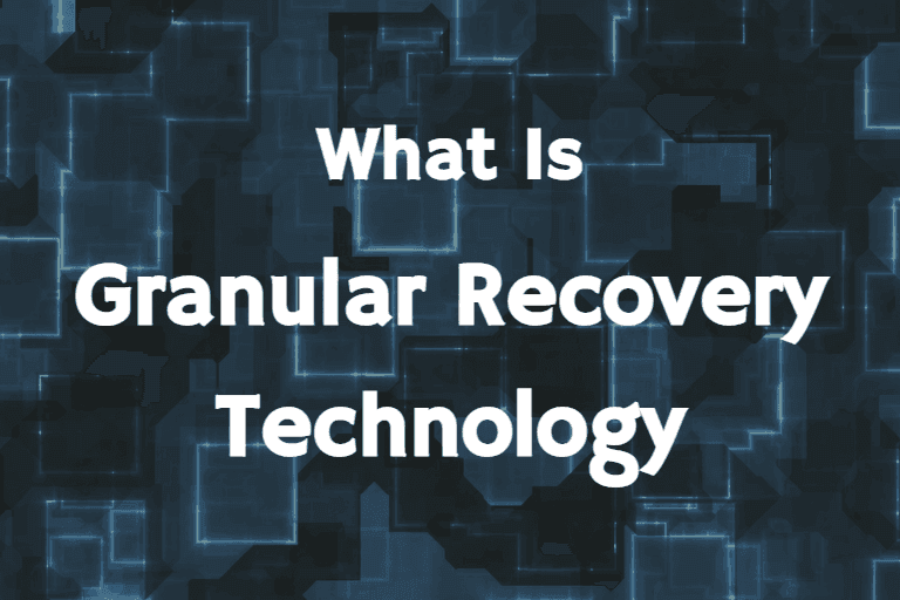In today’s digital world, data is king. Organizations rely on data to function effectively, making data recovery a critical aspect of any IT strategy. Granular Recovery Technology (GRT) has emerged as a powerful tool to address the specific needs of data recovery by allowing the retrieval of individual data components from a larger backup. This article explores granular recovery technology, how it works, its applications, benefits, and why it has become an essential component in modern data protection strategies.
What is Granular Recovery Technology (GRT)?
Granular Recovery Technology (GRT) refers to the capability of recovering specific data elements—like individual files, emails, databases, or even application components—from a larger backup set, rather than restoring the entire dataset. In traditional backup and recovery methods, restoring large amounts of data often required restoring the entire system, leading to potential data loss or downtime. GRT addresses this challenge by enabling recovery at a more precise, granular level.
How Does Granular Recovery Technology Work?
- Image-Level Backups: GRT primarily operates on image-level backups, which are comprehensive backups of a system or application. In image-level backups, every piece of data—including the OS, applications, and configurations—is captured as an image of the entire system.
- Indexing and Cataloging: The core functionality of GRT lies in the indexing and cataloging of the backup data. GRT tools extract detailed metadata from the backup, creating an indexed catalog of all individual components (files, folders, emails, database entries, etc.) within the backup. This allows users to identify and retrieve specific elements without restoring the entire backup.
- Direct Access to Backup Data: Instead of restoring the entire backup set, GRT provides access to individual items within the backup. This direct access is made possible through the integration of GRT into the backup solution, which uses metadata to pinpoint and recover only the desired data.
Applications of Granular Recovery Technology
- Virtual Environments (VMware, Hyper-V):
GRT is extensively used in virtualized environments, such as VMware and Hyper-V. In these setups, GRT enables administrators to recover specific virtual machines (VMs) or individual VM components (like files or applications) without restoring the entire VM. This reduces recovery time and minimizes data loss. - Database-Driven Applications:
GRT is crucial for database applications like Microsoft SQL Server, Exchange, and Oracle. Instead of restoring an entire database, which can be time-consuming and resource-intensive, GRT allows for the recovery of individual tables, emails, or records. - Microsoft Exchange and Email Recovery:
In email environments, GRT facilitates the recovery of individual emails, mailboxes, or even email folders without needing to restore the entire mailbox database. This ensures that users can recover only what they need without impacting overall system performance.
Benefits of Granular Recovery Technology
- Improved Recovery Time Objectives (RTOs) and Recovery Point Objectives (RPOs):
GRT dramatically reduces RTOs by enabling quicker restoration of specific data components. Instead of restoring entire systems or databases, users can recover only the parts of the data they need, significantly reducing downtime. - Efficiency and Resource Optimization:
By recovering only what’s necessary, GRT eliminates the need to restore large, often redundant datasets. This minimizes the use of system resources, improves backup efficiency, and ensures faster backup and restore operations. - Reduced Data Loss and Downtime:
Since GRT allows for the recovery of small, specific data components, organizations can avoid data loss and downtime that might have occurred while waiting for large-scale backups or restores. - Cost-Effective Solution:
GRT reduces the time and resources needed for full-system backups and restores. This not only lowers operational costs but also contributes to more streamlined IT operations.
Challenges and Considerations
- Complexity in Backup Solutions:
Implementing GRT requires robust backup solutions that support image-level backups and granular indexing. Not all backup solutions have GRT capabilities built-in, which can pose a challenge in environments where GRT is needed. - Storage and Performance Impact:
While GRT enhances recovery speed, the process of cataloging and indexing individual components can consume additional storage and processing power, which might affect overall system performance. - Data Integrity and Security:
Ensuring data integrity during granular recovery is crucial. Organizations must ensure that their GRT solutions maintain secure and consistent backups to prevent potential data corruption or unauthorized access during the recovery process.
Why Choose Granular Recovery Technology?
Granular Recovery Technology has become increasingly vital as organizations face growing volumes of data and stringent recovery requirements. Its ability to recover specific data components efficiently ensures minimal disruption and quick access to critical data. Whether in virtual environments, database-driven applications, or email systems, GRT provides a scalable and flexible approach to data protection.
In an era where data is both abundant and vital, GRT ensures that businesses can operate with greater confidence, knowing that they can recover critical data efficiently, reducing both downtime and data loss.
Conclusion
Granular Recovery Technology represents a significant leap forward in data recovery solutions. By allowing organizations to retrieve specific components from backup sets, it ensures faster, more efficient, and less resource-intensive recovery processes.
Whether it’s for virtual environments, databases, or email systems, GRT has become an essential component of modern IT infrastructure, helping organizations safeguard their data with precision and reliability. As data continues to grow and evolve, GRT will undoubtedly play a crucial role in future data protection strategies.
Stay ahead with insightful articles and the latest trends at articleforward.
